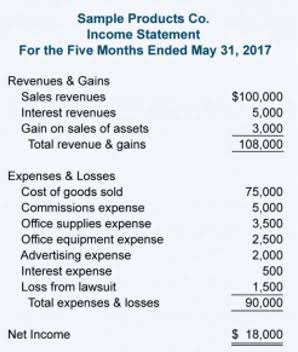- 18 de Março, 2025
- Publicado por: Ana Sousa
- Categoria: Sem categoria

They offer comprehensive audit trails and make it easier to https://www.bookstime.com/ track and verify financial transactions across multiple entities. Blockchain technology enhances security and transparency for intercompany transactions. It provides an unchangeable, secure, transparent ledger of all transactions that ensures financial data is accurate and tamper-proof. The centralized data eases tracking of the firm’s economic performance, so better decisions on strategies can be made.
- Users can swiftly access financial data, documents, and reports, boosting productivity and facilitating easier management of financial information.
- It can be difficult to accurately gather and consolidate financial data from multiple business units without the risk of errors or discrepancies.
- Operating a parent company with multiple entities can be difficult, particularly if business units use different workflows and software platforms.
- The financial team at Disney faces the intricate task of consolidating this diverse financial data into a cohesive picture, showcasing the performance of the entire empire.
- Non-compliance can result in significant penalties, emphasizing the importance of comprehensive documentation and justification for allocation methodologies.
- Multi-entity accounting is the process of managing the accounts of multiple business units, subsidiaries, or legal entities under a single parent company.
Improved Financial Visibility
One of the key benefits of multi-entity accounting software is its ability to automate the consolidation of financial statements. This feature saves significant time and effort by eliminating the need for manual consolidations, reducing the potential for errors, and ensuring that financial reports are produced quickly and accurately. For a deeper understanding of how to effectively manage this process, consider exploring our blog on financial consolidations for valuable insights.
The Walt Disney Company

CFOs and controllers can seamlessly switch organizations and entities in the Rho platform to support treasury and finance processes in one spot. For example, a parent company may operate through entities that use different currencies. The accounting department must deal with different exchange rates and the accounting impact of currency conversions. Multi-entity business structures offer many benefits but also come with their fair share of challenges, especially for the finance teams managing the accounting for these organizations. Combining the right accounting software with financial automation tools like Ramp creates a comprehensive solution that enhances financial transparency, improves efficiency, and supports smarter decision-making.
Take control of your multi-entity finances with Pleo
- These requirements include intercompany eliminations, foreign currency consolidation, and other intricate accounting considerations that must be made at the end of each month.
- Retailers often review inventory levels daily to meet customer demand and avoid shortages.
- BILL provides both AP automation software to help you manage larger purchases via invoices, as well as corporate cards to manage day-to-day spending and expense management.
- Multi-entity accounting can be the keystone for effectively navigating the financial complexities of a large or growing corporation.
- These solutions directly address some of the challenges that multi-entity businesses struggle with, like adhering to various accounting standards, tax reporting requirements, and multiple currencies.
For instance, teams should use a comparable chart of accounts for all business entities, which supports accuracy and consistency throughout the organization’s financial records. Without multi-entity accounting, it can be difficult to accurately track compliance in each department or business unit. If found non-compliant with certain tax or reporting regulations, the company could face penalties, fines, or other legal consequences.

Why is multi-entity accounting relevant to private equity-backed businesses?
The purpose of multi-entity accounting is to generate one cohesive set of financial records for the entire organization, even if its various legal entities operate separately for the most part. Multi-entity accounting software gets rid of this by having all financial accounts in one centralised place. Some systems will even fill in the data for accepting an invoice automatically once the other company has filed it.
How to Choose the Best ERP for Your Business

They must be able to segment their revenue according to budget line, area, and product. By eliminating a large portion of the possibility for human error, multi-entity accounting automation makes your accounting procedures function more like tools than like a chore. This could be because of what is multi entity accounting the workload, but it could also result from underutilised staff members and using different systems. Accounting gets more complex as a business expands and adds new services, products, or geographic areas to its portfolio. A finance team has a lot more work to do as a result of this type of organisational drag. It might be challenging to integrate with other business software, such as point-of-sale systems, inventory control software, or timekeeping software.
Fortunately, there are accounting softwares with features designed to help you run multiple locations from one central hub, and these options include QuickBooks, Xero, Sage Intacct, and NetSuite. Finding software that allows you to review the financial reporting for each location separately ensures that your company is protected against internal and external fraud attempts, such as duplicate or fraudulent invoices. It offers all the basic functionalities you need, like a chart of accounts, accounts receivable, accounts payable, and financial reporting automation.


A multi-entity business or entity is an organisation with different entities under it which could be different subsidiaries or brands with distinct revenues, expenses, and reporting requirements. Thanks to INKLE BOOKS, which offer real-time expenditure data and automates time-consuming tasks. Having a clear, real-time picture of your retained earnings finances through multi-entity accounting will help you make smarter judgments when faced with tough choices like taking a risk or playing it safe. It’s time to explore the extensive capabilities of Xledger and revolutionize how your business approaches multi-entity accounting. Multiple entities encompass a spectrum of legal structures, including corporations, partnerships, or limited liability companies (LLCs) operating under the umbrella of a parent organization.

